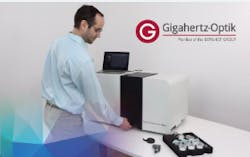Evaluation of the aging behavior of metalworking fluids
Metalworking fluids are commonly used to cool and lubricate metal workpieces during machining to reduce heat and friction. Due to evaporation, erosion, or bacterial decomposition/modification, the properties of the cooling lubricant also change over time, affecting the operation of the machines or the quality of the metal workpieces. Extending the life of a cooling lubricant is desirable from both economic and environmental perspectives. Knowledge of the effects of processing conditions on aging behavior and reliable analytical methods are required to characterize aging phenomena. To date, no quantitative estimates of aging effects on cooling lubricants have been described in the literature. Only univariate estimates based on single parameter measurements, such as pH alone, exist.
In cooperation with partners (Reutlingen University, the University of Tübingen, the University of Natural Resources and Applied Life Sciences (Vienna) and the company Festo SE & Co. KG), a scientific study was published in which the intuitive SphereSpectro 150H spectrophotometer system from Gigahertz Optik GmbH was used for the simultaneous metrological monitoring of three quality parameters of cooling lubricants and a mathematical model was developed for the evaluation. This model can be used to infer the cooling lubricant concentration, the droplet size and the pH value. These parameters are relevant for predicting the service life of the cooling lubricant. By knowing each of these parameters, adjustments can be made in the process to optimize the longevity of the coolant.
Detailed information can be found in the scientific paper: https://www.mdpi.com/1424-8220/21/24/8299
With the SphereSpectro 150H, the optical material properties, i.e. the spectral absorption coefficient and the spectral effective scattering coefficient, can be determined simultaneously and separately from each other - something that has not been possible up to now with conventional measuring systems. For the measurement, the samples are placed directly into a cuvette and measured with the SphereSpectro 150H without further sample preparation.
In this case, only one measuring system can replace conventional and separate measuring methods, such as dynamic light scattering measurement, turbidity measurement or various spectroscopic measuring methods such as electrochemical impedance, Raman or fluorescence spectroscopy. Measurement errors caused by tramp oil, for example, can also be considered when measuring with the SphereSpectro 150H. The intuitive operation of the SphereSpectro 150H does not require specially trained personnel.
With this first feasibility study we have shown what is technically possible. If you are interested or have a similar application, we look forward to hearing from you.
